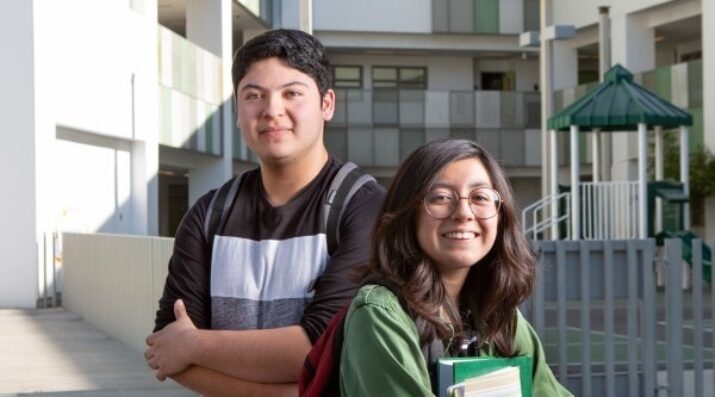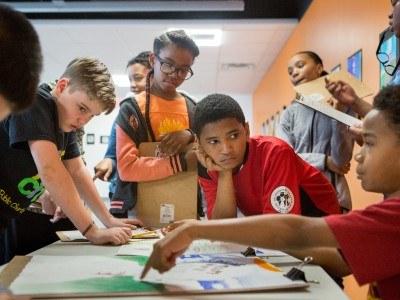Why Schools Need to Change
Incorporating Leadership Skills into a Student-Centered Classroom
Topics

Today’s learners face an uncertain present and a rapidly changing future that demand far different skills and knowledge than were needed in the 20th century. We also know so much more about enabling deep, powerful learning than we ever did before. Our collective future depends on how well young people prepare for the challenges and opportunities of 21st-century life.
Teachers can use student-centered practices to model leadership and help students develop leadership skills themselves.
It does not matter if it is young children, adolescents, or adults, everyone in K-12 education is always learning. But equally important to learning is leading. Leaders in education teach, model, innovate, create, set examples, and lead others to learn. It is assumed by most that education leaders are found in administration, the district, the school board, curriculum developers, and so on. But is that true? Leadership is much more than authority, administration, or a title role. It is the influence over others toward a goal. Is that not what a teacher provides to a student—influence toward a goal? Or a mentor to a mentee? From one student to another? These examples of leadership can be seen in anyone in any age and in any setting in education, from students to teachers to administration.
To be a successful leader, a person has to allow others to follow their lead in order to meet a collaborative goal. In doing so, they are using a variety of leadership skills such as reflective practice, collaboration, communication, continued learning, trust, building relationships, community, accountability, and risk-taking. So how can teachers utilize these leadership skills in their classrooms and become an agent of change for their students? First, they must intentionally embody these skills themselves with authenticity and genuineness. If they are doing this effectively, then they are setting the tone in the room as a leader that their students will notice and appreciate. Even better, the students will be more apt to mimic the behavior if the teacher is modeling these attributes well. As an educator in a classroom full of students, we can really shape, create, and change a lot of different aspects of learning. When we do this, we are teacher leaders.
So as a teacher leader in a classroom, what leadership skills should students be learning from you? In some ways, all of them! 21st-century skills, essential skills, or life skills are very similar to the ones found in many schools’ Portrait of a Graduate. These mirror leadership skills that teachers themselves have and students should be learning in school!
These skills are essentially leadership skills expressed in a student-friendly format.
Take for example the Portrait of a Graduate from the Manchester School District (MSD) in New Hampshire. The MSD graduate profile includes six categories of skills and traits students should master in order to graduate: 1) communication & collaboration; 2) critical thinking & problem solving; 3) growth mindset, resilience & adaptability; 4) equity mindset, cultural competency & empathy; 5) work & life ready “basic” skills; and 6) STEM & technology skills (MSD, 2020). All of these skills are ideally integrated into the curriculum with the hope that all students will be college, career, or civic ready. These skills are essentially leadership skills expressed in a student-friendly format.
In order to prepare students for their futures, the adults they learn from should be modeling these skills for them. With student-centered or personalized learning educators can model, teach, and instill essential skills for all their students through the following ways:
- Student agency and choice using students’ personal interests, abilities, and cultural awareness.
- Meaningful assessment such as project-based learning, place-based learning, and other real-world authentic assessments.
- Performance instruction such as inquiry, questioning, and phenomenon.
- Social emotional learning (SEL) such as self-reflection, social awareness, relationship building, and empathy.
Student-centered leading and learning is multifaceted and complex but so important for our ever-changing education world. If students have control over their learning they will be more successful and more engaged. Student-centered learning focuses on the student as a whole person, incorporating all their interests and experiences that will ultimately impact what they learn and how they retain information long-term.
When allowing students to have control over their learning, the learning will feel more authentic. Even better, if students co-design the content itself, they can build on their own leadership skills in the process.
Sometimes it can be challenging to incorporate new things into your classroom. Educators are always being bombarded with new information and initiatives. Here are a few examples of how leadership skills can be used in a classroom based on my own experience. Even if some of these examples sound challenging, they can be slowly integrated by making small changes to things you are likely already doing in your classroom!
- In my biology classes, we have a fun performance assessment for genetics. Students are tasked with being a genetic counselor for a pretend “couple” that has concerns about a genetic disorder that runs in their family. I have the students act as the expert in their field, research the disorder, then present their findings to our class on whether or not they recommend their couple have children or not based on the risk factors. This task assesses them on critical thinking, problem solving, communication, collaboration, and empathy. They are given a real-world challenge that is authentic and they need to be solution minded.
- In my health classes, we have a cultural food project where the students are assessed on the nutrition unit by using a food dish relevant to their culture, family, or just general interest. Students create a presentation showcasing the food ingredients, nutritional breakdown, cultural significance, and history behind the dish. Even better, they can then make the food and bring it in if they choose to! It is a great way to incorporate SEL into the classroom with cultural awareness, self-awareness, empathy, and communication skills. They also just love to share their favorite food with their friends.
- Another example from my health classes could be modified in any content or grade level. I allow students to fully design their own project on a topic of their choice. They are able to design everything from their own products, timeline, research choice, even the rubric and guidelines. At first students are apprehensive and want direction but when they get going, it is fun for them. This year, my classes chose to research different topics of how social media impacts our health. Some students did research, some interviewed their peers in the school, some developed surveys, some experimented, the list goes on. It was a great learning experience for everyone, myself included. Allowing freedom for students to truly have their own agency in their learning created an opportunity for many leadership skills to develop: communication, collaboration, growth mindset, perseverance, self-management, and so on.
When allowing students to have control over their learning, the learning will feel more authentic. Even better, if students co-design the content itself, they can build on their own leadership skills in the process. In doing this, the teacher will be able to gain knowledge of where their students are in their learning journey through meaningful assessment. The process of moving from a traditional classroom to one that is student-centered and personalized is not an easy process. It requires grit, determination, and dedication. But more importantly, it requires confidence and reflection in your own leadership skills as a teacher leader. Small changes can, over time, make big progress for your classroom and students.
Photo at top by Allison Shelley for EDUimages, CC BY-NC 4.0.




